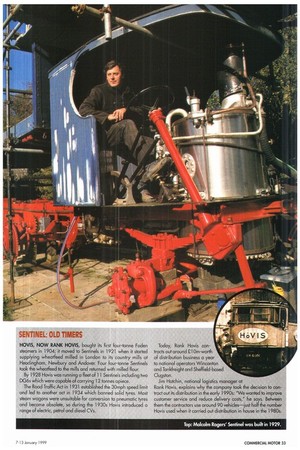SENTINEL: OLD TIMERS
Page 35

If you've noticed an error in this article please click here to report it so we can fix it.
HOVIS, NOW RANK HOVIS, bought its first four-tonne Baden steamers in 1904; it moved to Sentinels in 1921 when it started supplying wheatfeecl milled in London to its country mills at Headingham, Newbury and Andover. Four four-tonne Sentinels took the wheatfeed to the mills and returned with milled flour.
By 1928 Hovis was running a fleet of 11 Sentine s including two DG6s which were capable of carrying 12 tonnes apiece.
The Road Traffic Act in 1 931 established the 30mph speed limit and led to another act in 1934 which banned solid tyres. Most steam wagons were unsuitable for conversion to pneumatic tyres and became obsolete, so during the 1930s Hovis introduced a range of electric, petrol and diesel CVs. Today, Rank Hovis contracts out around £10m-worth of distribution business a year to national operators Wincanton and Tankfreight and Sheffield-based Clugston.
Jim Hotchin, notional logistics manager at Rank Hovis, explains why the company took the decision to contract out its distribution in the early 1990s: "We wanted to improve customer service and reduce delivery costs," he says. Between them the contractors use around 90 vehicles—just half the number Hovis used when it carried out distribution in house in the 1980s.
































































































